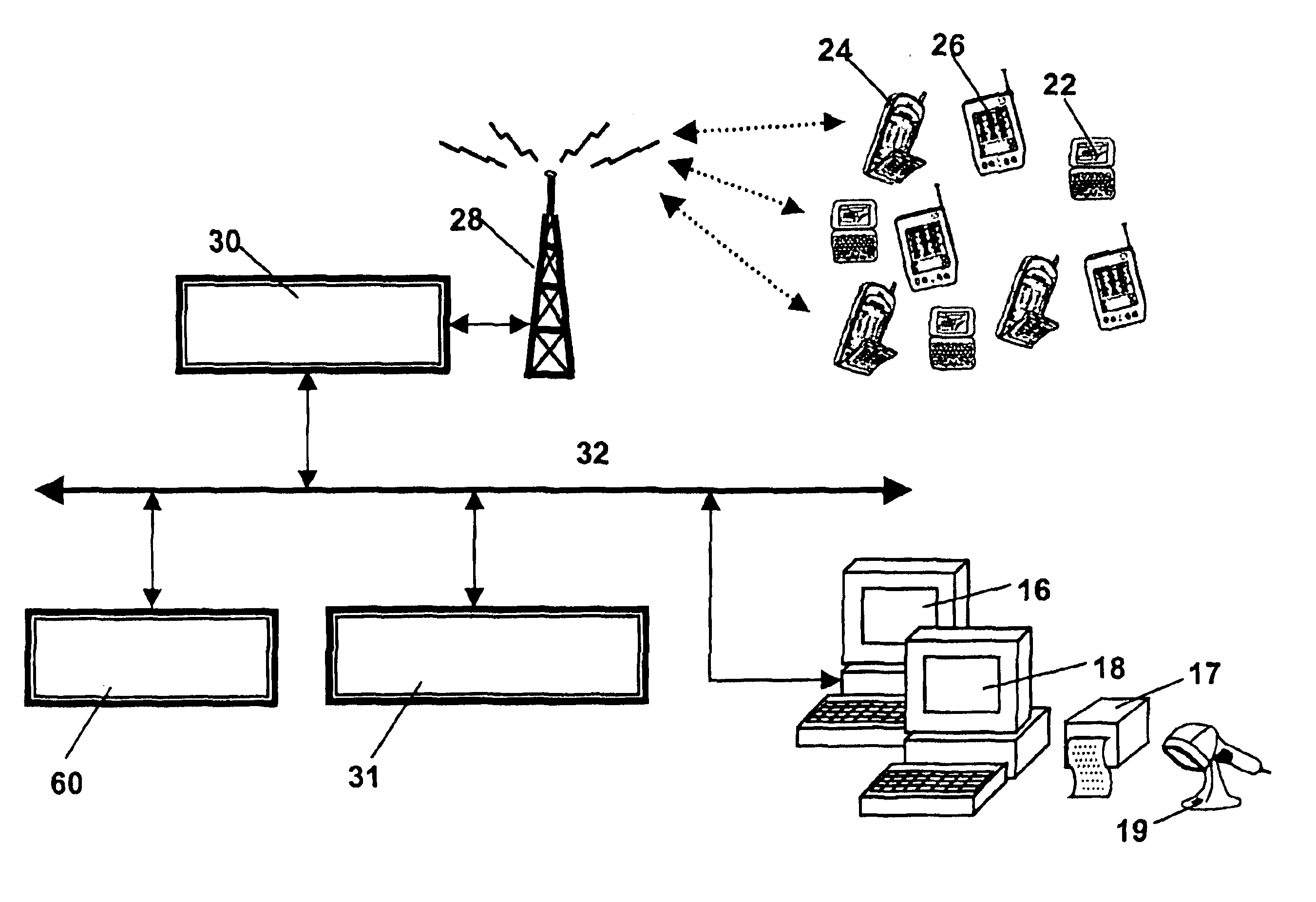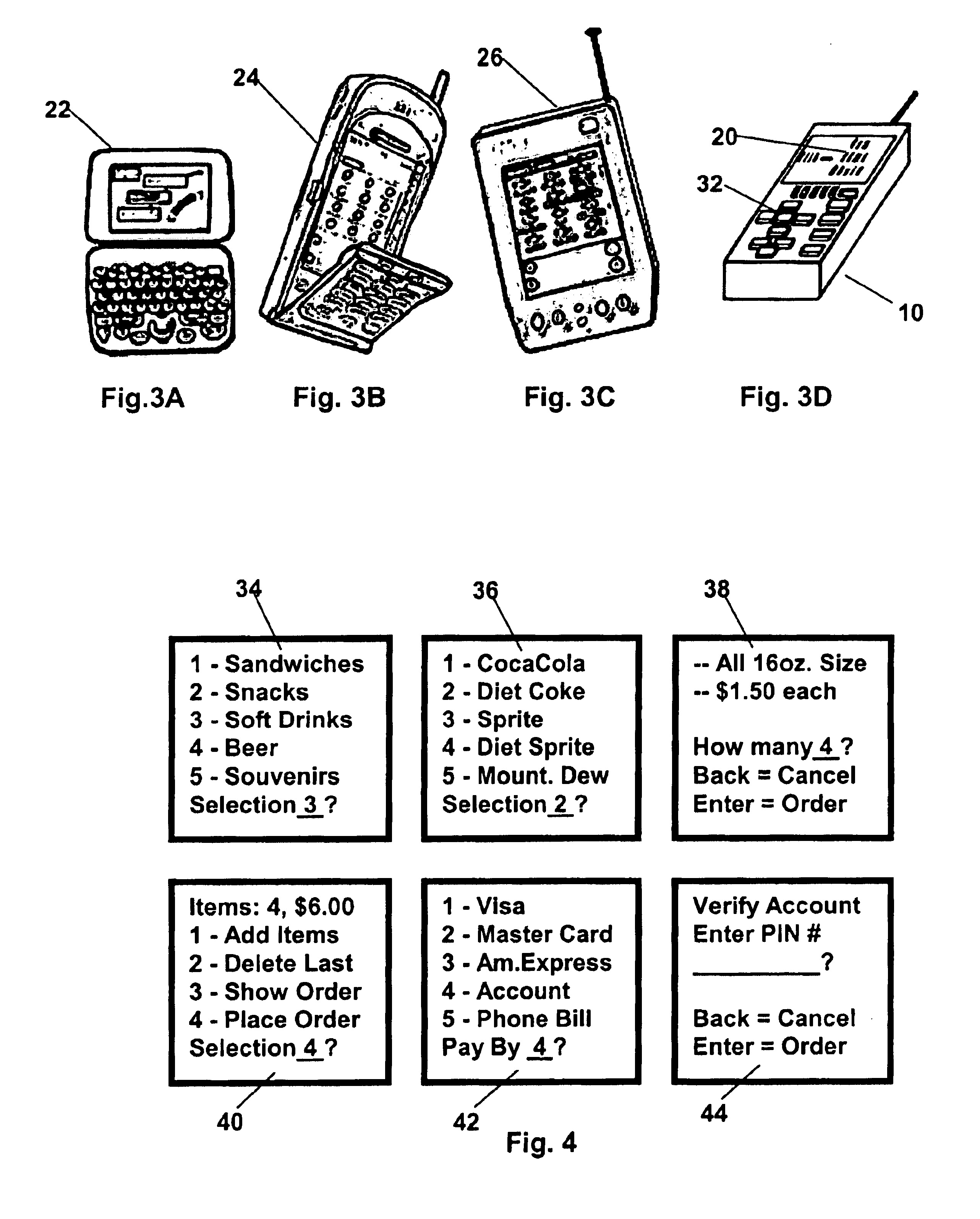Remote ordering system and method
a technology of remote ordering and ordering method, applied in the direction of stacking articles, instruments, de-stacking articles, etc., can solve the problems of vendor not having the correct change, patrons cannot secure refreshments in the form of food and drink, and other patrons are affected by considerable disruption
- Summary
- Abstract
- Description
- Claims
- Application Information
AI Technical Summary
Benefits of technology
Problems solved by technology
Method used
Image
Examples
Embodiment Construction
[0051]FIG. 1 depicts a system that uses a custom, application specific, local area, wireless data communication network. As patrons arrive at a venue / facility for a concert, game or other event, they will be presented with the opportunity to obtain a battery-operated wireless remote ordering device 10, illustrated in FIG. 3d, which will be available at a kiosk having a device rental station 12. Devices 10 are operable, as later described, to communicate an order for menu items to a transceiver node 14, which communicates orders from multiple remote ordering devices 10 to a fulfillment center having server 16 and order processing computers 18. In this embodiment, the remote ordering devices 10 and the base transceiver nodes / stations would be designed specifically for this application using available transceiver chip sets, and other off-the-shelf components such as keypads, microcontrollers, displays and the like which are commonly known to those skilled in the art. In FIG. 1, the bas...
PUM
 Login to View More
Login to View More Abstract
Description
Claims
Application Information
 Login to View More
Login to View More - R&D
- Intellectual Property
- Life Sciences
- Materials
- Tech Scout
- Unparalleled Data Quality
- Higher Quality Content
- 60% Fewer Hallucinations
Browse by: Latest US Patents, China's latest patents, Technical Efficacy Thesaurus, Application Domain, Technology Topic, Popular Technical Reports.
© 2025 PatSnap. All rights reserved.Legal|Privacy policy|Modern Slavery Act Transparency Statement|Sitemap|About US| Contact US: help@patsnap.com



